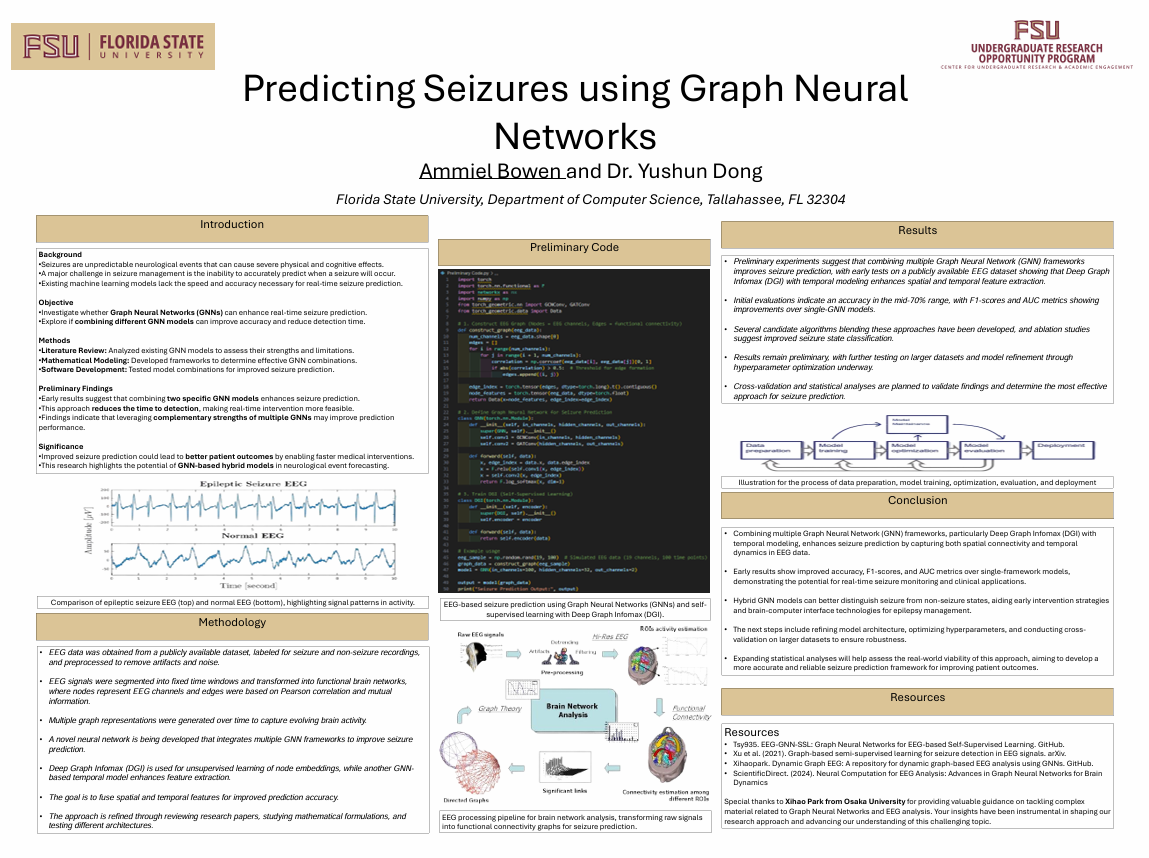Research Symposium
25th annual Undergraduate Research Symposium, April 1, 2025
Ammiel Bowen Poster Session 2: 10:45 am - 11:45 am/ Poster #3

BIO
Hailing from Tampa, Florida, I’m a Computer Science major with a deep-rooted passion for computational neuroscience—where the brain meets technology. This field excites me because it opens doors to both life-saving medical applications and entertaining, immersive innovations. My ultimate goal is to become a data scientist focused on exploring the brain-technology interface to expand the capabilities of emerging technologies like Neuralink. I believe understanding neural patterns through data can revolutionize how we treat mental health, enhance learning, and experience the world around us.
On campus, I serve as the President of CodeEducation, an organization dedicated to leveling the playing field in tech through group projects and mentorship. I'm also the Web Chair of Theta Tau, FSU’s professional engineering fraternity, and a proud brother of the award-winning Theta Eta Chapter of Kappa Alpha Psi Fraternity, Incorporated. Through these roles, I’ve grown as both a technical leader and a community builder—skills I hope to carry into a career that bridges innovation, inclusion, and impact in the brain-tech space.
Predicting Seizures using Graph Neural Networks
Authors: Ammiel Bowen, Dr. Yushun DongStudent Major: Computer Science
Mentor: Dr. Yushun Dong
Mentor's Department: Computer Science Mentor's College: College of Arts & Sciences Co-Presenters:
Abstract
Seizures are unpredictable neurological events that often result in significant physical and cognitive impairments. One of the primary challenges in seizure management is the inability to accurately predict when a seizure will occur, limiting opportunities for timely medical intervention. While machine learning has shown promise in the field of seizure forecasting, existing models frequently lack the precision and speed required for real-time applications.
This research investigates the potential of Graph Neural Networks (GNNs) to enhance seizure prediction by modeling the brain as a complex, non-Euclidean graph structure. We aim to explore whether combining multiple GNN architectures can improve prediction accuracy and reduce detection time, ultimately enabling real-time response capabilities. Our methodology consists of a comprehensive literature review to assess the strengths and limitations of current GNN approaches, mathematical modeling to identify effective model combinations, and software development to implement and test these hybrid systems.
Preliminary findings indicate that the integration of two specific GNN models results in improved prediction accuracy and a reduction in time to seizure detection. These results suggest that combining complementary GNN frameworks can lead to more robust and responsive prediction models. By leveraging the unique structural insights provided by GNNs, this research contributes to the advancement of real-time neurological event forecasting and highlights a promising pathway toward improved patient outcomes in epilepsy care.
Keywords: Computer Science, Neuroscience, Data Science


